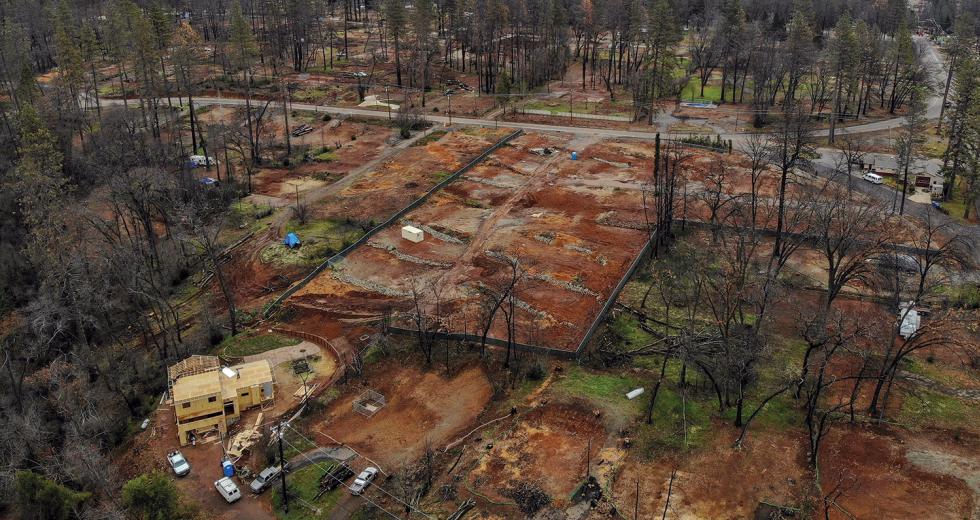Every Californian knows the state has burned and will burn again. Wildfires have destroyed 38,757 buildings in the past five years alone, according to the California Department of Forestry and Fire Protection, and 70 percent of these buildings are homes. More homes are likely to burn; an analysis by McClatchy of Cal Fire and U.S. Census data found that 2.7 million residents live in areas with a high risk of wildfire.
Yet the state is also in a housing crisis. The scarcity of urban real estate pushes construction inexorably outward, toward the very wooded areas most likely to ignite. Should this be allowed? In April 2019, Gov. Gavin Newsom nixed the idea of the state banning developments in high-risk areas (instead leaving it up to the local municipalities), saying, “There’s something that is truly Californian about the wilderness and the wild and pioneering spirit.”
Instead of a kibosh on construction, a memo from the governor’s office suggested efforts to “make communities more resilient,” which include a stiffening of the building codes, better evacuation planning and the “cost-effective hardening of homes.” This is part of a broader wildfire response outlined in the memo, including forest and vegetation management, the purchase of new fire engines, and further investment in clean energy — a nod to the climate change that’s part of the root cause of wildfires.
So if we are not banning construction, are these preventative home-hardening strategies, as mandated by the building codes, effective? And how does the fire crisis impact the housing crisis and vice versa? The good news is that the building codes are rigorous and demonstrably useful; the bad news is that they might not be enough. And construction in the rural parts of the Capital Region appears to be showing no signs of slowing down, for better or worse.
Code Switching
Since the 1960s, the primary emphasis of the wildfire-related building codes dealt with the concept of defensible space, or how much brush and vegetation must be cleared around a home. Then came the Cedar Fire. In 2003, wildfires ravaged around 3,700 homes in Southern California, and not just rural homes, but houses in the San Diego suburbs — homes with plenty of defensible space.
“That was a real wake-up call for us,” says Daniel Berlant, an assistant deputy director for Cal Fire. The organization realized that defensible space wasn’t enough. Cal Fire launched a multiyear research project aimed at understanding how and why the homes burned. It focused on homes where the wilderness meets the city, the wildland-urban interface. “What we’ve learned is that to make a home resistant to wildfires, you have to have a combination of defensible space and building construction that is hardened to withstand embers,” explains Steven Hawks, staff chief for Cal Fire’s wildlife planning and engineering division.
The embers are crucial. When Hawks, a veteran firefighter who battled flames for 24 years, dug into the research, even he was shocked by the wrath of wildfire embers. “The embers are a real problem,” he says. “It’s not just a big wall of flame that hits (a home) all at once.” Hawks says embers can fly from the main fire at terrifying speeds — up to 70 mph, like tiny missiles — and ignite smaller fires miles away, which is what happened during the Camp Fire in Paradise in 2018. (So even if homes do not abut the forest, they could still be at risk.) Embers can shatter windows, ignite bark in landscaping and burn holes through roofs, which could set fire to the attic’s insulation or items in storage.
“What we’ve learned is that to make a home resistant to wildfires, you have to have a combination of defensible space and building construction that is hardened to withstand embers… The embers are a real problem. It’s not just a big wall of flame that hits (a home) all at once.” Steven Hawks, staff chiefCal Fire’s Wildlife Planning and Engineering Division
In 2008, Cal Fire examined all the ways embers could penetrate homes — primarily in gaps like vents, windows and weak roofs. The old codes required a quarter-inch mesh screen to cover the vents, but a fire autopsy found embers still squeezed into gaps that size, so the new codes shrink the openings to one-sixteenth of an inch. Now windows must be double paned, roofs hardened and more flame resistant, and exterior siding ignition resistant and nonflammable. These specifications became known as the Wildland-Urban Interface Fire Area building standards in Chapter 7A of the California Building Code in 2008, and are widely considered, as Berlant puts it, “the most stringent codes out there.”
But do they work? Cal Fire collects data on every home destroyed by wildfires. An analysis of the Camp Fire found only 18 percent of the homes built before 2008 were unscathed, compared to 51 percent of newer homes. “The building codes actually work,” says Hawks. More recently, in the wake of the Camp Fire, Cal Fire updated the codes with new standards: weather stripping around garage doors for a more perfect seal to block incoming embers), tougher roofs and mandatory screens covering open skylights.
The codes, of course, are only part of a much broader wildfire protection plan. In terms of new development, Cal Fire also works with municipal planners on things like emergency response, evacuation plans and road design. They challenge community developers with a battery of questions: Are the roadways wide enough for emergency vehicles? Is there a water supply? Are there two ways in and out of the neighborhood?
Berlant says that a municipal planner’s goal might be to “squeeze in as many homes as possible,” but if they shave even 6 inches from the width of the road, a semitruck or bulldozer won’t be able to turn around. “It’s really important for planners to understand that even minor modifications have an impact,” says Berlant.
The regulations on the books “are good codes,” says Char Miller, a professor of environmental analysis and history at Pomona College and an expert on wildfire policy. “A lot of fire science went into thinking about these regulations. It gives people some security, at least to know that the house isn’t going to burn immediately.” Yet he offers a stern note of caution. “What the codes don’t prevent is the very construction in high-severity areas.” He’s deeply skeptical of any such new development; even if the new homes are more fire resistant, many will still burn. “To my mind, I won’t say it’s idiocy, but it’s really bad policymaking.”
Miller is critical of Los Angeles and San Diego counties for green-lighting developments in high-risk wildland-urban interface areas and hopes potential developers and local governments in Northern California, particularly east of Chico and in Paradise, use more caution. Miller says if he was in charge, he would institute a buyback policy where the local governments, at the county level, issue bonds to purchase the land in high-risk areas, and then use that acreage for parks or other open spaces. “That doesn’t mean that parks aren’t going to burn, but it does mean that the fire is not going to burn houses,” he says. Such a scheme might be a political nonstarter, but Miller is not alone in wanting some kind of curb on construction. In a June 2019 poll by the Los Angeles Times, 75 percent of respondents thought home building should be restricted in high-risk fire areas, a sentiment shared across party lines (85 percent of Democrats, 57 percent of Republicans and 72 percent of Independents).
Advocates for the construction industry counter that, yes, of course there is risk, but realistically, what else can be done? “There are risks wherever you build,” says Michael Strech, CEO of the North State Building Industry Association. “If you’re building in the valley, you’re susceptible to floods. In the Midwest, hurricanes or tornadoes. In the Bay Area, earthquakes. No place is 100 percent free of natural disaster.” If we ban construction in these fire-prone areas, Strech argues, then the small pool of available housing shrinks even further, making homes in California even pricier. “Oftentimes, it’s the affordability in rural areas that gives the opportunity for people to become homeowners, to set down roots and basically to have a high quality of life,” says Strech.
‘Third-Grade Math Problem’
After the Camp Fire in Paradise in 2018, building codes were
updated with new standards, including tougher roofs.
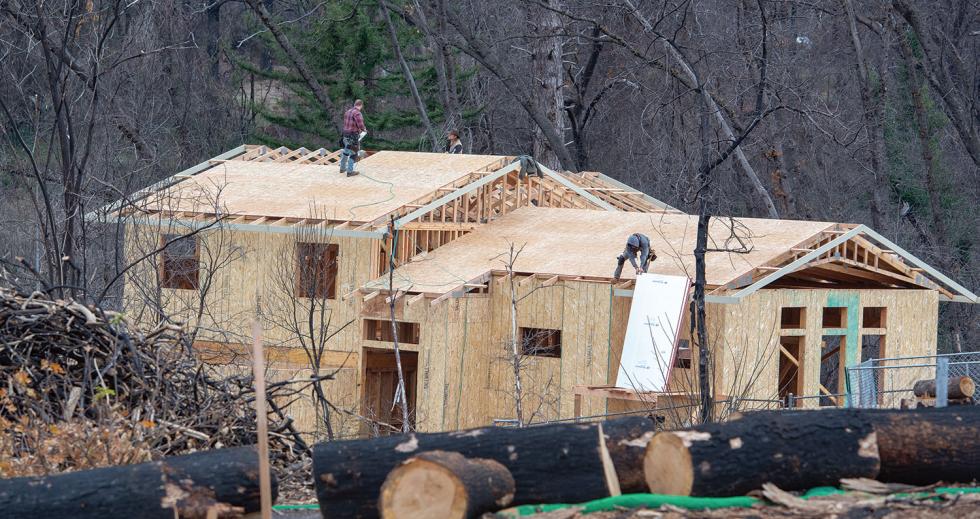
While the polling suggests a reluctance (or at least ambivalence) by Californians to allow new construction in high-risk areas, industry experts say the fires have had no impact on the pace of building — either residential or commercial. “The fires clearly impacted a lot of people,” says Strech, “but I can tell you that collectively, from a regional perspective (the six-county Sacramento region), we’re going to build about as many homes as we built last year, maybe a little more.”
Through the third quarter of 2019 (the most recent data available), North State BIA reports 6,066 new homes, compared to 6,224 for a full year of 2018. (When the fourth quarter of 2019 is added, BIA expects the number to easily top 2018.) Even when we account for the devastation of the wildfires, we’re confronted with what Strech calls the “third-grade math problem” of basic supply and demand. “We’ve got a lot of people really interested in owning their own homes with extremely low interest rates,” he says, and this unquenchable demand, coupled with the pinch in supply, keeps the pace of construction brisk.
The fires might not affect the appetite for new construction, but they do have a sneakier effect on the supply side of the equation: the labor pool. Even pre-fires, construction labor was scarce. “For every five experienced (tradespeople) who retire, there’s only one who enters the field,” says Tim Murphy, CEO of the Sacramento Regional Builders Exchange and a member of Comstock’s Editorial Advisory Board. He says that for the past decade, construction jobs in the Bay Area, which pay higher wages, have been siphoning the Capital Region’s available trade labor — specifically carpentry, electrical, mechanical, HVAC and plumbing. Then the state burned. Now the rebuilding efforts from the wildfires in Paradise and Santa Rosa are draining the Capital Region of even more trade labor, which could put upward pressure on prices. Strech agrees with this assessment, but warns that we’re only beginning to see the impact of the fire-related labor drain and that costs could go higher still. “I don’t think the other shoe has dropped yet,” he says.
Even if a would-be homeowner is comfortable with assuming the risk of wildfire, they might be jolted by another unwelcome surprise. “We’ve seen fire insurance rates going up by as much as 300 or 400 percent,” says David Tanner, a Sacramento real-estate agent with 40 years of experience. He says if the annual insurance payment used to be $2,000, suddenly it can jump to $8,000. “For people who are looking to buy, and then they get quotes for $8,000 a year, a lot of times that means they can’t qualify for the loan, because their mortgage payments would have to be that much less,” he explains. Tanner says that you wouldn’t see this dynamic reflected in the overall number of homes constructed, but anecdotally, “I’ve heard of quite a few deals falling apart.”
Yet despite spikes in fire insurance and the risk of more wildfires, the “third-grade math” suggests homes will be built and people will buy them, consequences be damned. Miller, the environmental policy expert, says the paradox circles back to a misunderstanding of what the fire codes can do — and what they can’t.
“You have a governor who says, ‘Our codes will defend you.’ You have county supervisors who say, ‘Codes will defend you.’ Developers will say, ‘Codes will defend you.’ And real-estate agents say, ‘Codes will defend you,’” says Miller. “No one is saying ‘No.’ No one is saying, ‘Caveat emptor.’” He reminds us of some additional third-grade math: The building code’s 50 percent success rate also means that 50 percent of the homes burned.
—
Get this and other stories delivered to your inbox weekly: Sign up for our free email newsletters by clicking or tapping here.
Recommended For You
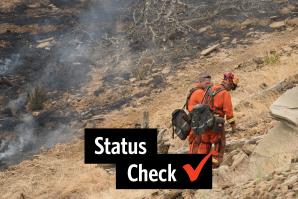
Status Check: Fire Nonstarter
California experiences a tamer 2019 wildfire season, but work remains
Ten of the 20 most destructive wildfires in state history have occurred since 2015. These megafires fueled by hot, dry winds and climate change seemingly blanket every late summer with gray, smoky skies and a gnawing worry among Californians that the next one might take out their home.
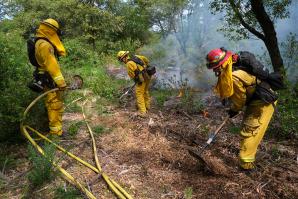
Beating the Burn
California’s plan to deal with deadly and devastating wildfires — including controlled burns, thinning and a restoration economy — is ambitious; is the state up to the task?
Past approaches to forest fires have been a misinformed regime of fire suppression: extinguishing all flames quickly. Now California’s forests are overgrown tinderboxes-in-waiting; the approach is changing, but there’s a lot of work to do.

After the Fire
A muralist and photographer team up to paint and memorialize the ruins of the Camp Fire in Paradise
Artist Shane Grammer knew he had to paint the brick chimney the moment he saw a photo of it — the only part of a friend’s house in Paradise still standing after the Camp Fire devastated the town. The fire started tearing through the area on Nov. 8, 2018, becoming the deadliest and most destructive wildfire in California history.
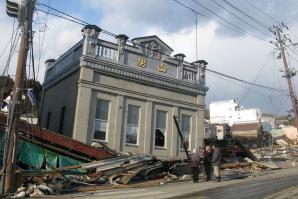
Temblor Trouble
Will recent quakes around the world spur policy change in California?
The scenes of twisted metal, splintered wood, crumbling brick and flooded streets are still vivid to Kit Miyamoto, a Sacramento-based engineer who follows earthquake destruction around the world. But he’s not just seeing these images in Haiti, Chile or Japan.



